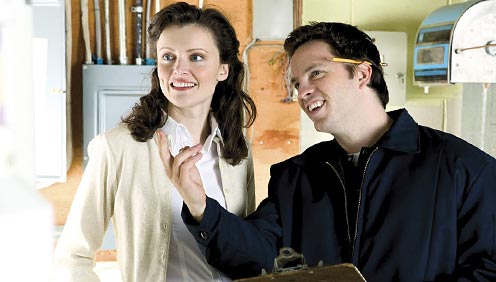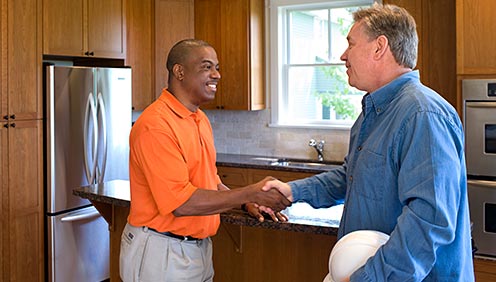During the winter, your air conditioner is dormant. It goes unused for months between the last hot day of autumn and the first warm days of spring. Your indoor unit may gather dust while the outdoor unit may fill with leaves. During this time, moisture and inactivity can cause problems when it comes time to turn your AC back on again.
Before your air conditioner on again, there are a few steps that everyone should take to make sure your AC performs efficiently and does not take damage. Complete Heating and Air Conditioning is here to offer a few helpful tips and any maintenance services your AC may need to be ready for the hot season ahead.
1) Change Your Air Filter
Season changes are always a good time to change your air filter. Your air filter is the key to maintaining your home air quality by taking out dust and allergens before the air is cycled back through your home. However your air filter also protects the inside of your HVAC system by only allowing clean air through. The first and easiest way you can prepare to switch modes from heat to cool (and later from cool to heat) is to change your air filter.
Air filters should be changed every one to three months depending on the conditions in your home and the sensitivity of your residents.
2) Uncover or Clear Your Outer Unit
Next, check on your exterior unit. Your AC works in two pieces, the interior AC unit and the exterior compressor unit. From late autumn to early Spring your compressor may have filled with leaves, sticks, dirt, or grown through with plants. Before you turn on your AC, you'll want to clear it you. If you covered your compressor to keep this from happening, uncover the unit and inspect it for dirt or damage. If not, you'll want to sweep out the grating and possibly use a hose to clean
If your compressor unit is more clogged than you are comfortable or able to clear out, you can rely on an HVAC technician to safely perform maintenance. They will be able to remove the outer grate and safely clear out all the leaves, twigs, or growing plants that have invaded your external unit without bending the fins. If there are bent fins, often they can be bent back into place.
3) Schedule a Maintenance for a Tune-Up and Cleaning
The next step is to call your HVAC technician for a round of maintenance. Before turning on your AC, your technician will clean the coils completely, and check all the internal components. This tune-up will make sure that everything will work correctly when your air conditioner is switched back on after months of dormancy. Tune-ups are essential to prevent damage when your AC when you turn it back on, and then to keep your heater safe when you turn it off.
Your technician will also take the necessary steps to prepare your heater to be turned off. They will clean the heating elements, whether this is electric, gas, or boiler, and cleaned so that your heater will go into dormancy.
4) Open All Your Vents
In the winter, often unused rooms have the rooms closed and draft stoppers put under the doors to save heat. If there are any closed vents in your home, now is the time to open them. Your vents are actually balanced for efficiency, or should be. If your home is air balanced, there are registers inside the vents that will provide the most efficient cooling when all the vents are open.
Unlike in the winter, creating rooms that remain hot is less efficient than conserving heat by closing off rooms. If any of your vents are closed, it's time to open them to allow free-flowing air through the house and whole-home cooling.
5) Have Your Attic Ventilation Inspected
The efficiency of your attic can also contribute to your AC efficiency as the hot season begins. The right insulation of your attic can reflect heat instead of trap it, and prevent attic heat from transferring down into the rest of your house. The right ventilation in your attic also allows heat to leave your attic rather than becoming trapped.
Many HVAC technicians can help you check on your attic vents and make sure that your air circulation is funcitoning properly to help keep your attic, and therefore the rest of your house, cool through the summer.
6) Check Your Ducts
Your ducts only need to be cleaned every three to five years, but it's a good idea to check them for damage or leaks. If your ducts have gaps, you can lose a significant amount of cooling efficiency over time. A quick inspection can determine if your ducts need repairs before the summer and efficient cooling becomes important.
7) Set Your Fans to Spin Counter-Clockwise
The last check to make sure your home is ready for the hot season is to set your ceiling fans spinning the right way. Due to the universal design of ceiling fans, the blades are tilted such that when the fan spins clockwise, warm air is pushed upward and then circulated around the room which is beneficial in the winter. In the summer, however, you want your fans spinning counter-clockwise.
This creates a cooling down-draft that helps to keep each room cool. Clockwise ceiling fans can help you to use less AC by making rooms feel cooler and encouraging evaporation of summer humidity. Every fan has a switch on the base
Getting Ready for Summer with Complete Heating and Air Conditioning
Complete Heating and Air Conditioning can help you get your entire home ready for hot weather. Before you turn on your air conditioning, let us clean your compressor and internal AC unit and tune up the components to make sure everything comes online with no damage and maximum efficiency. We can also help you put your heating unit to bed, whether you have a furnace, gas or electric heater.
In addition, we can help you make your home ready for cooling by checking your ventilation, your air balancing, and the condition of your ducts. Contact us today to get your home ready for summer with a maintenance tune-up before turning on your AC for the first time.



